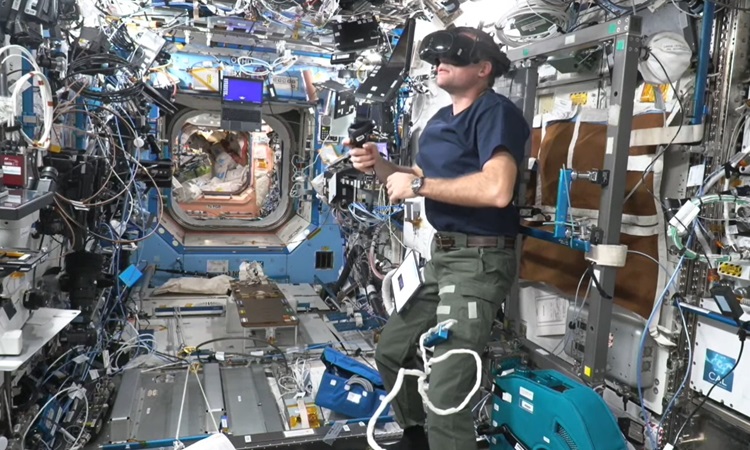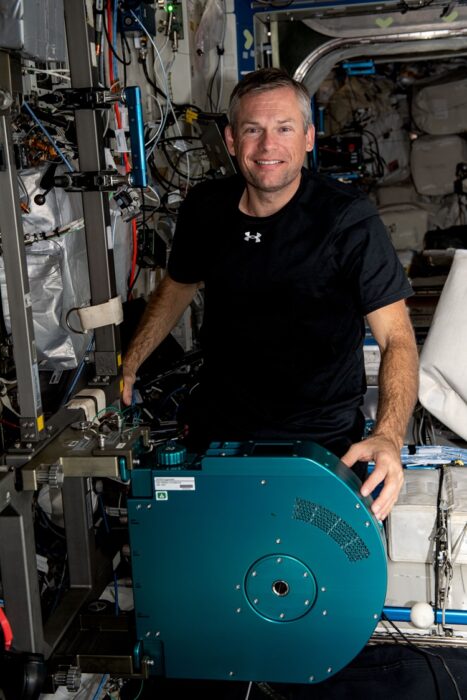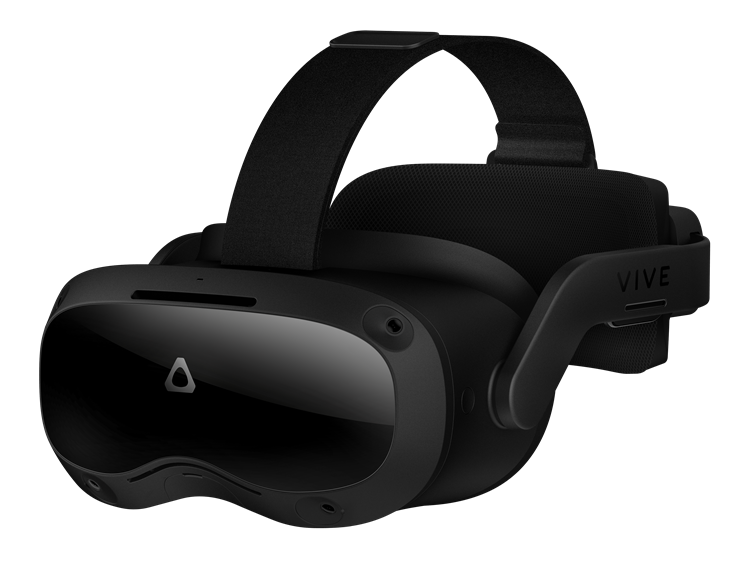
In Virtual Reality News
February 16, 2024 – HTC VIVE has announced that following last year’s successful deployment of its VIVE Focus 3 virtual reality (VR) headset onboard the International Space Station (ISS) to support astronauts’ mental health, the mission has now been expanded to include physical health.
According to the company, the VIVE Focus 3 is now being used as part of vital exercise routines onboard the ISS. The European Space Agency’s (ESA) Andreas Mogensen, Commander of the ISS for the duration of his six-month mission, has been using a FERGO exercise bike and VR experience built by the Danish Aerospace Company.
Thomas A.E. Andersen, CEO, Danish Aerospace Company, stated: “Supporting physical health of astronauts in microgravity is critical, not just for the success of a mission but for long-term health, and it actually helps with mental health as well. Our first exercise bike, CEVIS, functioned for over 20 years on the ISS and gave us a lot of insights. FERGO is a great upgrade, and combining it with VIVE’s VR expertise means that astronauts can be more engaged with exercise and hopefully also more motivated.”

The International Space Station is a challenging environment (pictured above), as it is small, confined, noisy, and visually sterile. To combat this sterile and bland interior, Mogensen wears a VIVE Focus 3 and has a visually and physically matched experience when cycling now. Whilst cycling, scenery moves in time, and with information from the VIVE Focus 3 sent via Bluetooth to FERGO, the astronaut experiences more resistance whilst cycling uphill or on different surfaces in the VR experience.
According to Jeremy Curtis, an expert from the UK Space Agency, astronauts can lose up to ‘40% of muscle and 12% of bone mass’ in five months whilst in space, and that “… the muscle loss is the equivalent of a 20-year-old turning into a 60-year-old over a period of three months.” In fact, upon returning to Earth, some astronauts have spent up to 12 months in physical rehabilitation to regain full fitness. As a result, while in space astronauts must exercise for two hours every day just to try and minimize the effects of microgravity.

“The deployment of VIVE Focus 3 on the ISS for mental health was an incredible milestone, and we’re excited to build on this success by expanding the initiative to include support for astronaut physical health,” said Cher Wang, Chairwoman and Co-Founder of HTC. “At HTC, we’re driven by a culture of innovation and we’re constantly seeking out new ways to push cutting-edge immersive technology to benefit humanity. VIVE Focus 3 being the first standalone VR/XR headset to work in the microgravity conditions of space is a testament to our team’s efforts, and will have a great impact on Earth and beyond.”
Commenting on the use of the headset, Mogensen said: “One of the things I love about this virtual reality set, is the sound – hearing the sound of the birds chirping, hearing the sound of the wind blowing through the reeds and through the leaves. I love that and it’s something I miss [about earth].”
The virtual cycling routes available to Mogensen were filmed in his native Denmark and include: Loekken, Silkeborg, Svanninge Bakker, Odense Aasti, and the Copenhagen Lakes.
For more information on HTC VIVE and its VR solutions, click here.
Image credit: HTC VIVE / Danish Aerospace Company
About the author
Sam is the Founder and Managing Editor of Auganix. With a background in research and report writing, he has been covering XR industry news for the past seven years.
